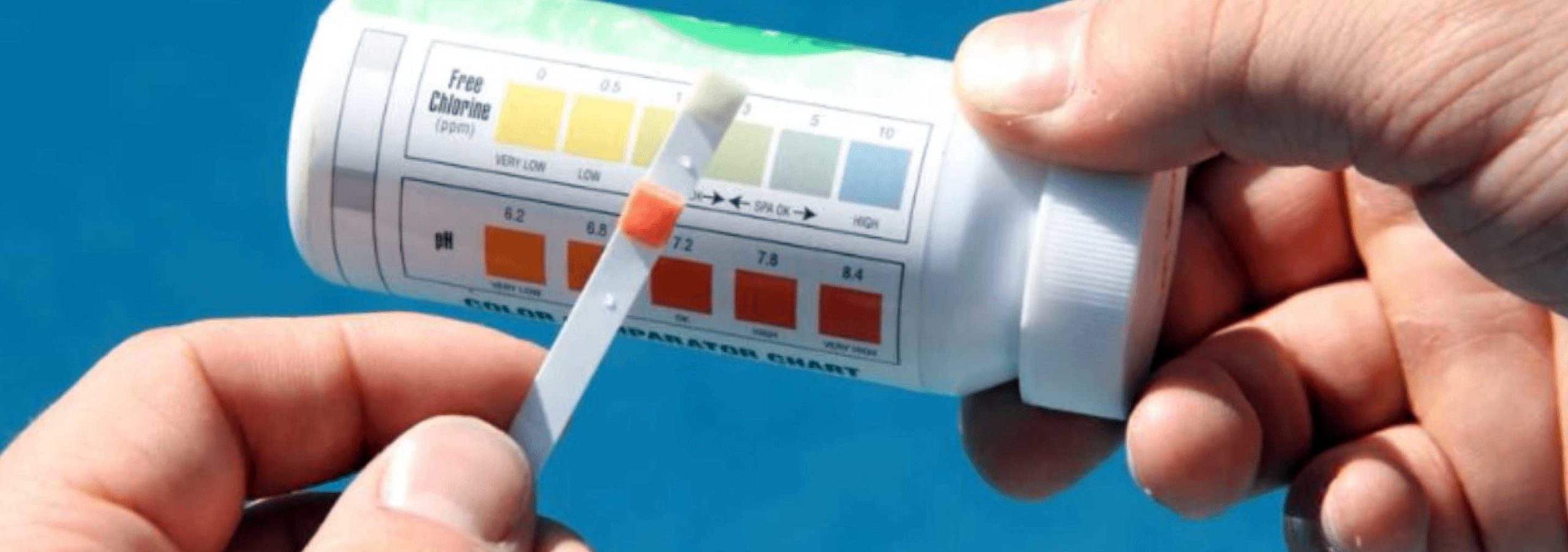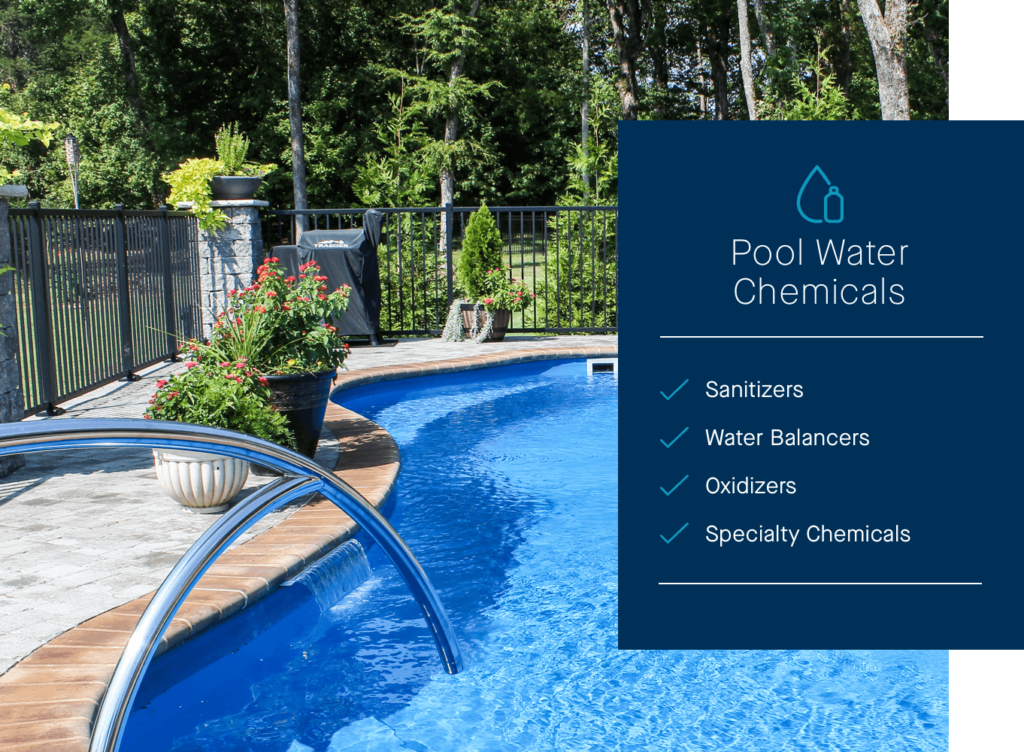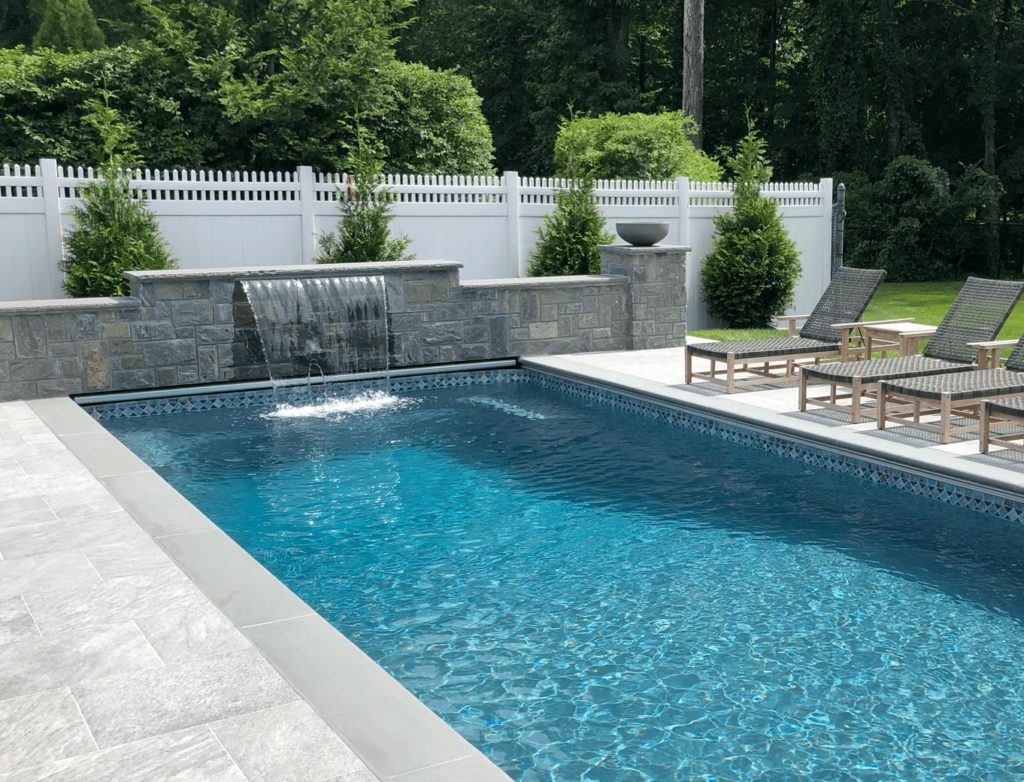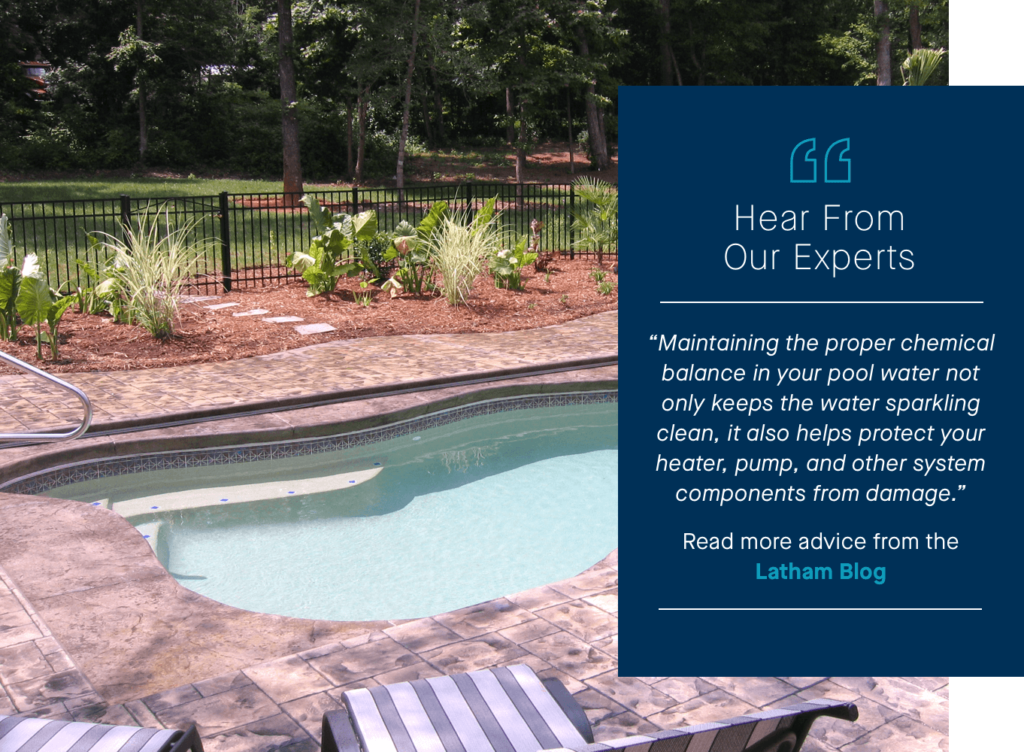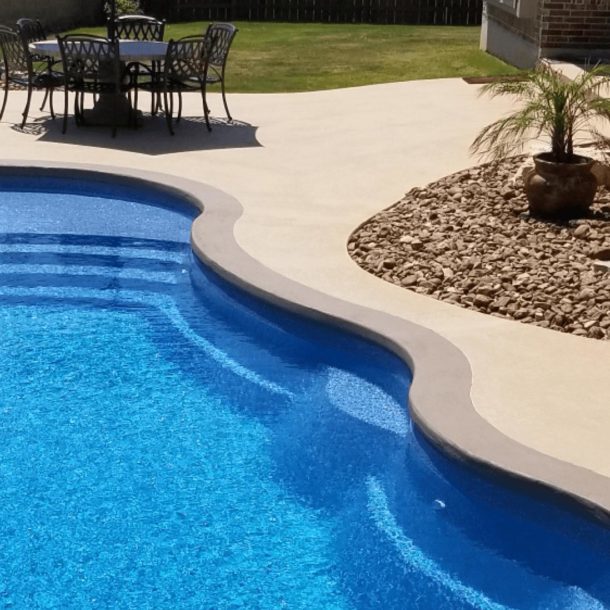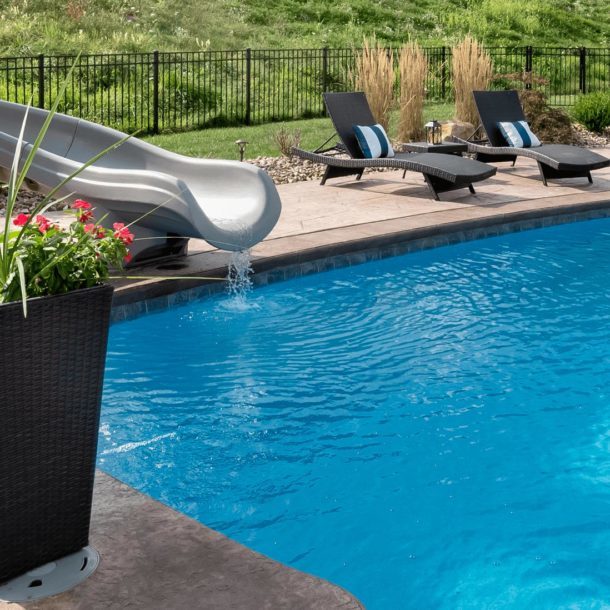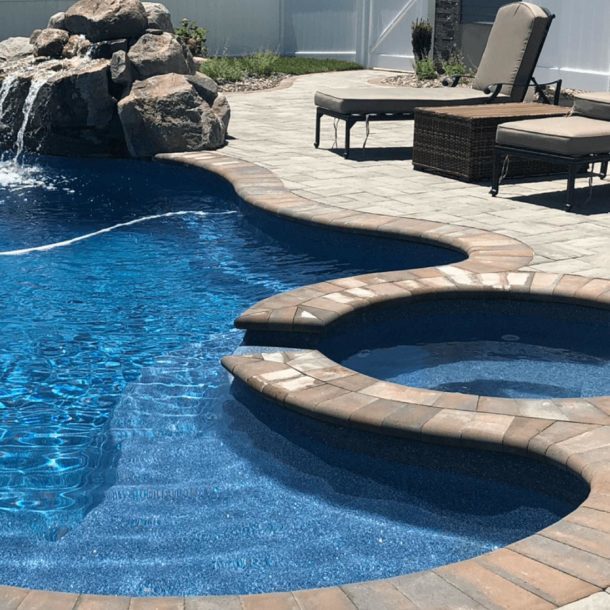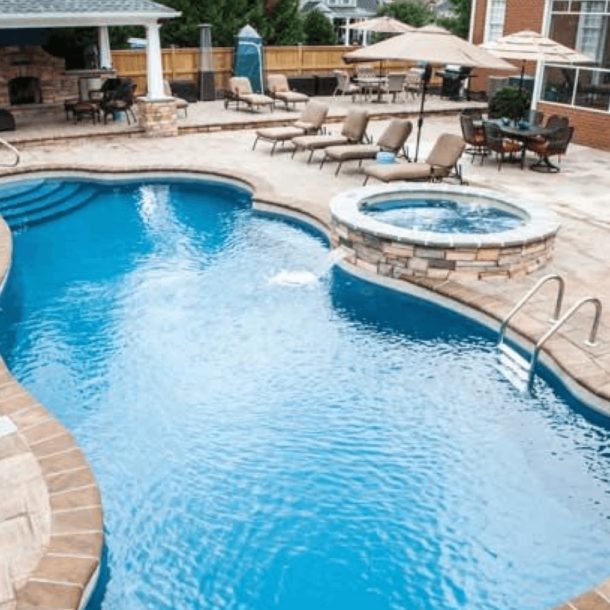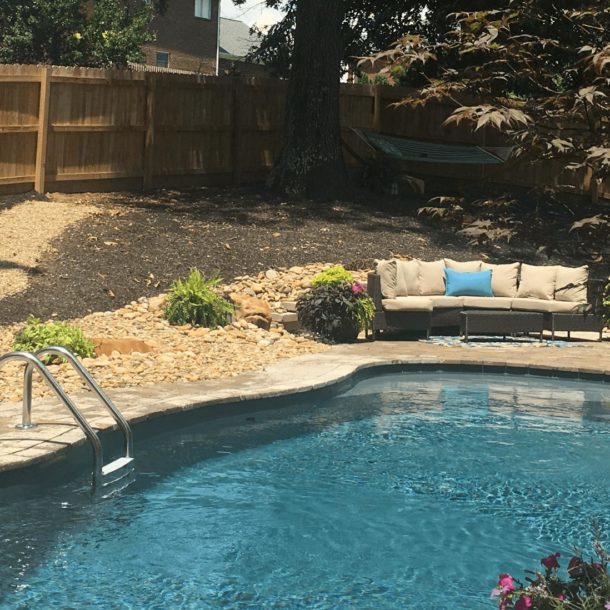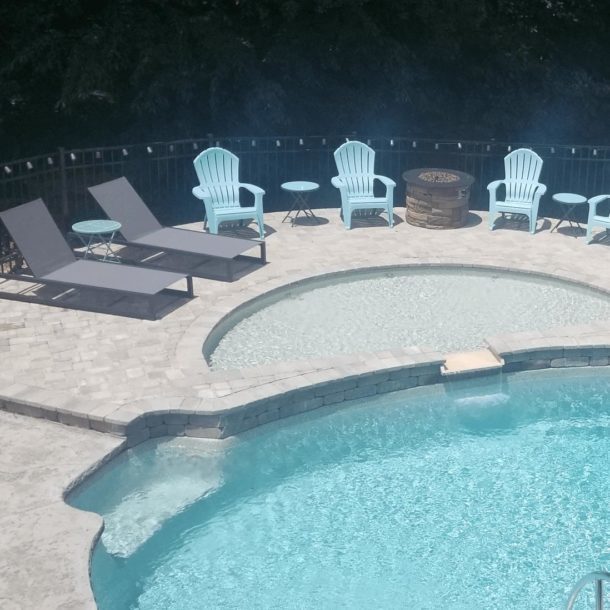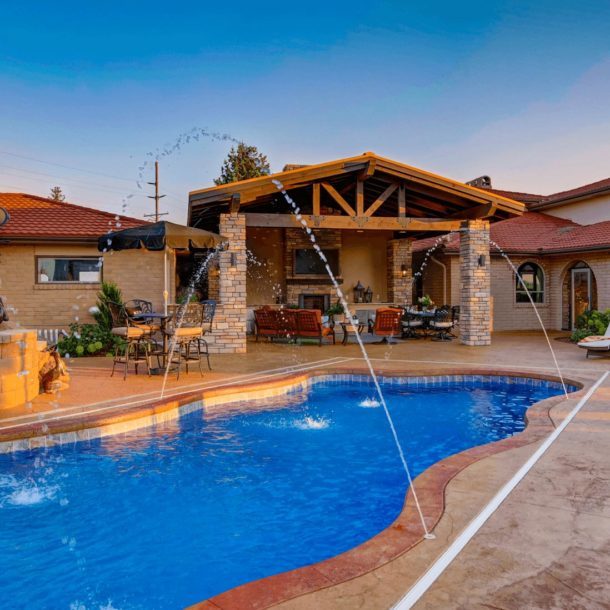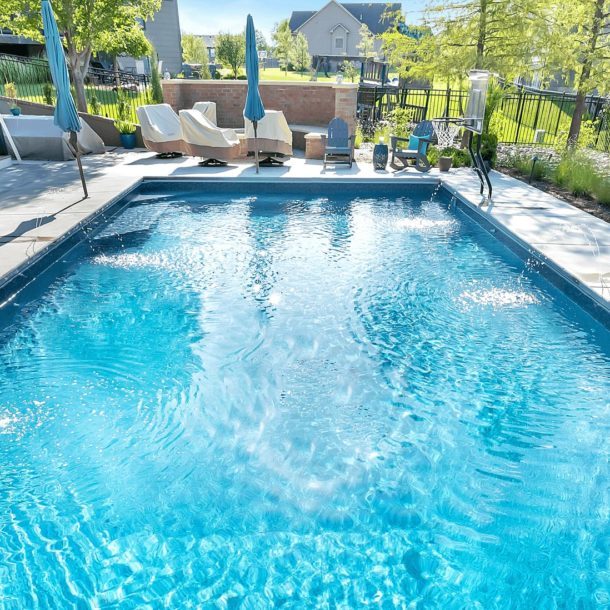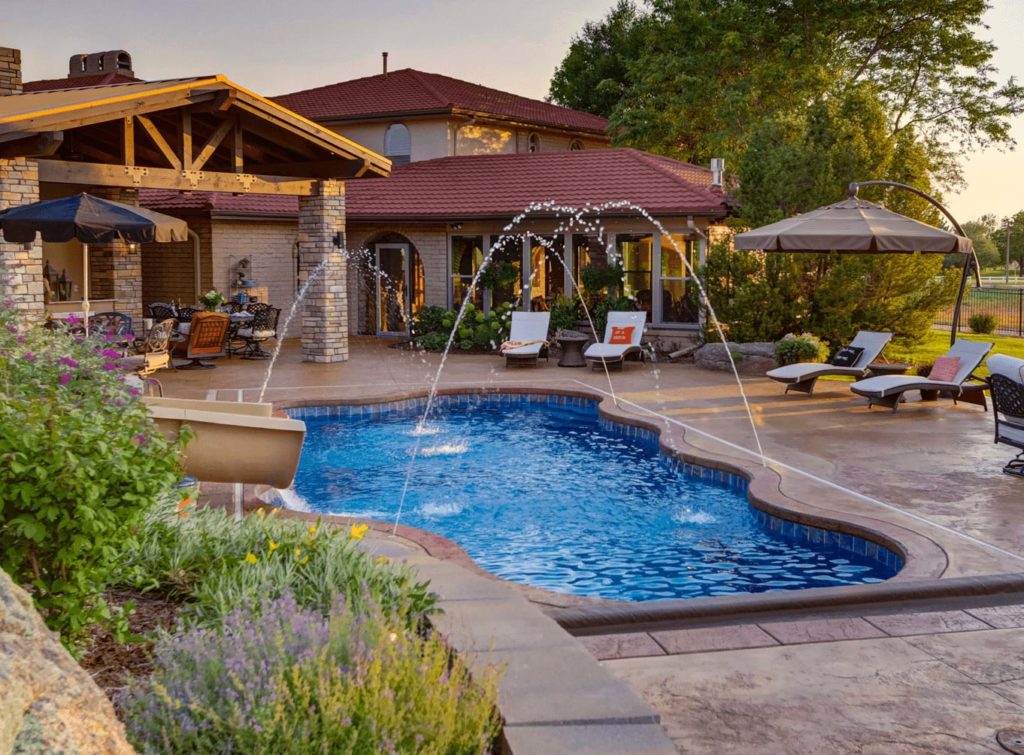Pool owners can face common issues like low alkalinity, high calcium hardness, or out-of-control algae blooms, especially after closing the pool for winter. A basic knowledge of pool water chemistry can help you correct these issues — or, better yet, avoid them altogether. That means you’ll save time and money, while getting more enjoyment out of the water. In this guide, we’ll cover balancing pool chemicals, which chemicals to use, best practices for safe chemical storage, and answer pool chemical FAQs.
Jump to Section: Pool Water Chemicals | How to Test Your Pool Water | How to Balance Your Pool
Pool Water Chemicals
There are numerous types of chemical products that are formulated to clean or balance swimming pools or pool parts. For example, pool shock chemicals like calcium hypochlorite (cal hypo) and sodium dichloro-s-triazinetrione (di-chlor) are used to sanitize water—usually on a weekly or biweekly basis—by raising free chlorine levels.
Most pool chemicals fall into one of the following categories:
- Sanitizers: Disinfect the pool water
- Water Balancers: Used to adjust pH, alkalinity, calcium hardness, and chlorine levels
- Oxidizers: Can be used to supplement sanitizers
- Niche-Purpose Speciality Chemicals: These chemicals, like flocculants, help floating particles clump together for easier removal.
Learn More About Pool Water Chemicals
Certain items on the list below are essential to keep on hand, such as pool shock chemicals, which are used to sanitize contaminated water. Others, such as stain removers, may not be necessary for every pool owner. You should consult with a pool care and maintenance expert, like the pool service technicians at Latham Pool Products, to determine which chemical products are right for your swimming pool needs. With that in mind, here are a few common pool chemicals you might want to learn about:
- Algaecides: Algaecides can help prevent algae from growing on pool surfaces.
- Alkalinity Increasers: Sodium bicarbonate, better known as baking soda, will boost your pool’s alkalinity levels while reducing the water’s acidity. We’ll talk more about alkalinity (and how to adjust it) in the section on balancing your pool.
- Calcium Hardness Increasers: Like the name implies, these chemicals are designed to raise your pool’s level of calcium hardness. Consider using a calcium hardness increaser, such as calcium chloride, if your measurements drop below 150 parts per million (ppm).
- Chlorine Neutralizers: According to the CDC, excessive chlorine can irritate your skin, eyes and lungs. It can also corrode pool equipment, potentially leading to costly damage. Chlorine neutralizers reduce the level of free chlorine in the water, helping pool owners avoid these problems.
- Filter Cleaners: Keep your pool filters clean and functional by using filter cleaners as necessary. These products break down oil, grime, and other obstructions.
- pH Adjusters: As we’ll explain a little later, you can raise or lower your pool’s pH levels by adding appropriate measurements of sodium carbonate (soda ash), sodium bisulphate (dry acid) or muriatic acid, depending on your needs.
- Phosphate Removers: Phosphate removers destroy phosphates, depriving algae of a critical food source.
- Pool Shock Chemicals
- Chlorine-Based Pool Shock: This category includes cal hypo and di-chlor. Unlike cal hypo, di-chlor is stabilized with cyanuric acid (CYA), which helps protect chlorine against the sun.
- Chlorine-Free Pool Shock: This category includes oxidizers like potassium monopersulfate, which helps sanitize pool water by preventing chloramines (combined chlorine) from forming.
Tile and Vinyl Cleaners: If you own a tile or vinyl liner swimming pool, you may want to look into cleaners to help maintain that day-one shine.
Many pool cleaning products contain chemicals that can be hazardous or even deadly if stored improperly. As the Environmental Protection Agency (EPA) points out, various pool chemicals “can potentially be highly reactive and capable of generating high temperatures, as well as releasing toxic vapors if improperly handled or stored.”
Avoid fumes, fires, chemical reactions, and other hazards by following the storage instructions on each cleaner carefully. The ideal storage space should be well ventilated, clearly organized, free of leaks or spills, and protected from excessive heat or sunlight.
How to Test Your Pool Water Chemicals
There are three different ways you can test your pool water chemistry: using pool test strips, using a pool testing kit, or using an electronic device. Each method has pros and cons. First, let’s take a step-by-step look at the how-tos of each testing method.
Just remember: no matter which method you choose, it’s important to test and balance your water regularly — ideally, at least two or three times per week. Regular water testing will help ensure that your pool remains cloud-free, crystal-clear, and most importantly, safe to swim in.
Three Ways to Test Your Pool Water Chemistry
Pool testing strips can quickly measure pH, alkaline, and chlorine levels. You can also purchase specialty pool strips to measure total dissolved solids (TDS), salt or other substances. Here’s how to use them:
- Hold the strip underwater for 2 to 3 seconds
- Remove the testing strip from the water, be careful to keep the padded side facing up
- Wait 15 seconds. Do not shake any excess water from the strip, as this may interfere with accurate results
- Compare your strip against the label on the package until you find the closest match. You may need to adjust pH or other levels, which we explain below
Pool testing kits require users to collect small samples of pool water, which change color depending on their alkalinity, pH and chlorine levels when mixed with a reagent. To use one, follow these instructions:
- Collect a water sample from at least 18” beneath the surface of your swimming pool
- Measuring as precisely as possible, fill the test vials according to the kit’s instructions. Be sure to rinse out each test cell with pool water before using
- Add the correct amount of reagent to each tube, following the kit’s directions carefully. You may need to gently shake the sample once it has been sealed shut
- Compare the sample colors against the label on the testing kit, looking for the closest match
You can connect digital pool testers to smartphones or other devices, which offer convenience and detail. However, electronic testers tend to be more costly — and often, less accurate — than alternatives like kits and strips. Since digital testers vary widely in their quality and design, be sure to follow the app or device’s instructions.
Still have questions about how to test your pool water? Just contact a Latham Independent Builder, and we’ll handle the testing for you! You can even bring your sample to us for testing. Our expert technicians will explain exactly what you should add, remove, increase or decrease to achieve the perfect swimming pool water chemistry.
What is the Best Way to Test Pool Water?
No single method is “right” or “the best” — it’s simply a matter of finding what works for you. Many pool owners prefer the speed and simplicity of test strips, while others prefer using test kits, which do not need to be replaced as frequently.
Experts often recommend test strips for beginners, because they provide reliable results with minimal effort and cost. As you gain experience and become more comfortable with the water testing process, you’ll likely develop a preference of your own. In the meantime, the pool service experts at Latham are here to help answer all of your questions!
How to Balance Your Pool
Testing your water is only the first step—you’ll also have to balance it, depending on what needs adjusting. If you want to continue enjoying a clear, clean, and comfortable swimming pool, you need to know how to balance pool water.
By balancing your pool correctly, you can prevent pool corrosion, avoid skin and eye irritation, and protect valuable pool equipment from damage. To chemically balance your swimming pool water, follow these eight steps:
Learn More About Balancing Your Pool
The order you balance your chemicals in is just as important as the quantities you use. For safe and accurate results, you should always test in the following order:
- Start by testing alkalinity and making adjustments as needed
- Next, test and adjust pH levels as needed
- Third, test and adjust calcium hardness as needed
After taking these three steps, you can add sanitizer, test CYA levels, measure TDS levels, and shock the pool, as described above.
It may take up to 24 hours to balance pool chemicals properly. The time required can increase or decrease depending on factors like the size and volume of the pool, the quality and condition of the water, whether you’re shocking the pool and how many adjustments need to be made using chemicals like sodium bisulfate or calcium chloride. For instance, if you raise the pool’s alkalinity by adding baking soda, you should wait a minimum of six hours before retesting alkalinity levels.
Whether you’re using your swimming pool for the very first time, or opening up for the season, you’ll need to take some extra precautions to ensure that you’re balancing pool chemicals correctly. For example, if your pool has been closed since winter, you might encounter thick algae on reopening day, which could require treatment with double or even triple the normal amount of pool shock.
If you’re opening a new or seasonal pool, we recommend consulting a pool dealer for assistance testing and balancing your water, which can be a tricky process even for experienced pool owners.
Failing to test (and balance) your water can lead to a host of problems. From skin rashes caused by excessive chlorination, to cloudy water caused by high pH or alkaline levels, to low alkalinity causing your pH levels to fluctuate or “bounce” unpredictably, to low calcium hardness corroding your valuable pool equipment, there are numerous issues that you can avoid simply by testing and adjusting your water. All it takes is a pack of pool strips, a few pool balancing chemicals like muriatic acid, and maybe a little help from your pool dealer.
Want to dig deeper into water chemistry? Learn more about why correct pool chemistry is important, then contact your local Latham Independent Builder for assistance. With thousands of premium quality, American-made pools and pool products to choose from, Latham is ready to meet all of your indoor, outdoor, inground, vinyl and fiberglass pool needs.
Get the Care Your Pool Needs from a Trusted Latham Independent Builder
In order to enjoy your pool for years to come, proper and attentive maintenance is important. If you have questions about maintaining your pool, contact your local Latham Independent Builder.
While these resources can help guide you, enlisting the help of a pool professional can ensure that one of your largest backyard investments gets the care and protection it deserves.
Learn More About Pool Maintenance
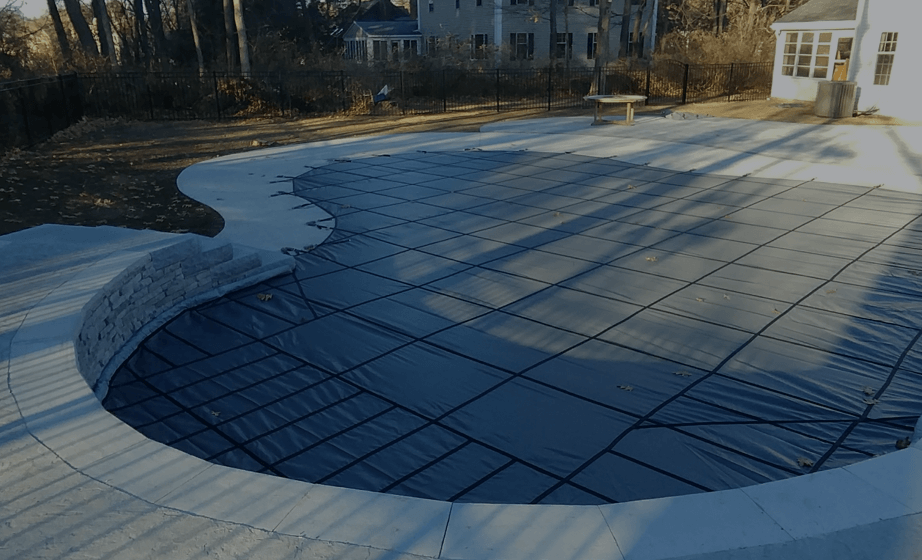
How to Winterize an Inground Pool
If you live in an area that experiences periods of freezing and thaw, there are necessary steps you should take to winterize your pool. Learn how to close your pool and protect your investment during winter months.
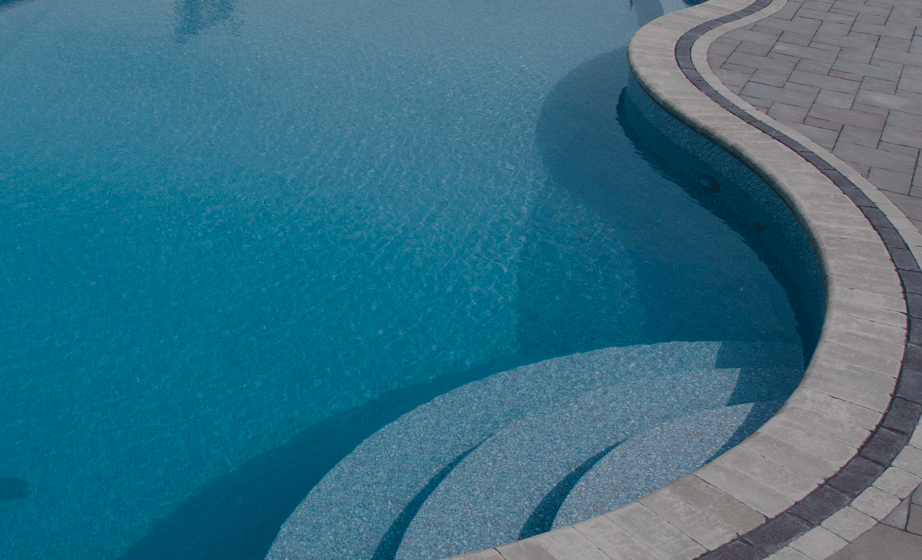
How to Shock Your Swimming Pool
Sanitizing your pool involves balancing chlorine and chemical levels to destroy bacteria and algae that can put a damper on your fun. Learn how to sanitize your chlorine or saltwater pool.
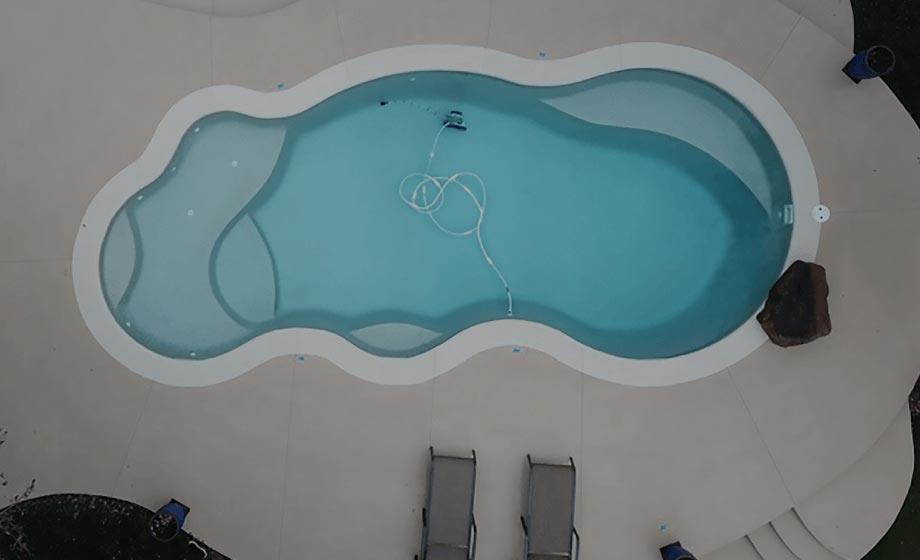
View All Maintenance Topics
If you’re new to pool maintenance, don’t worry! We’ve got you covered with resources that outline best practices for the basics of caring for your pool.
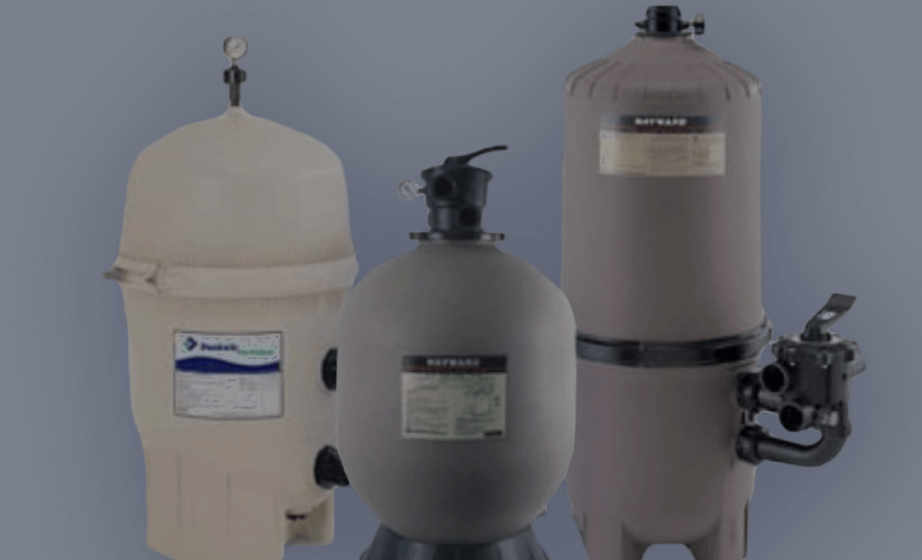
How to Clean Pool Filters
Your pool filters work hard so you don’t have to! However, while your pool filters work to trap dirt and debris, they still need a little TLC. Get tips to clean your pool filters.
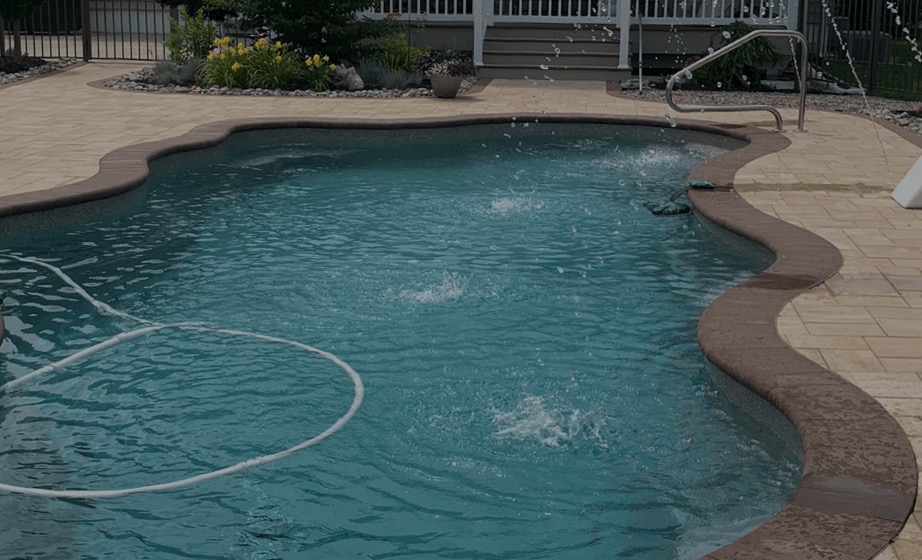
How to Clean an Inground Pool
From stain removal to using a pool vacuum, check out best practices for cleaning your inground pool and keeping it crystal clear!
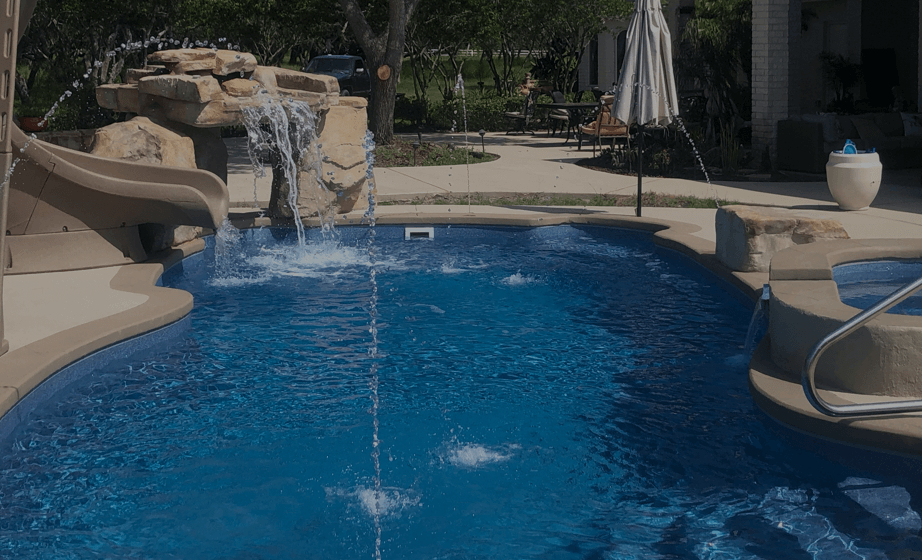
How to Open an Inground Pool in the Spring
Springtime heralds the dawn of greenery, sunshine and the promise of warmer temperatures. It’s also the perfect time to open your pool for the season! From the chemicals needed for pool startup to the best time to prep your pool for the season, learn everything you need to know about the pool-opening process.

